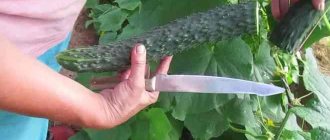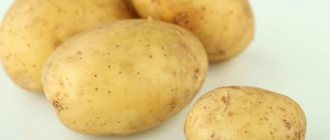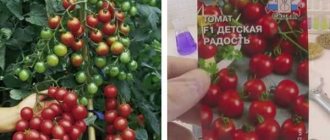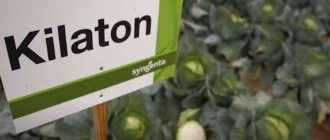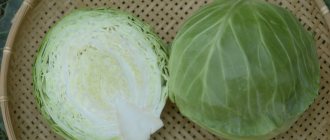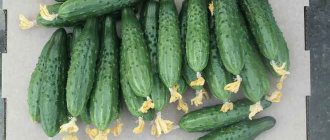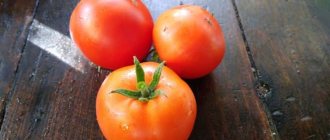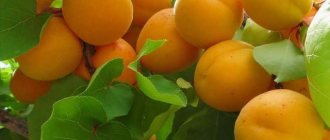History of selection of the Sibiryak Baikalova variety
The author of this frost-resistant variety is the famous Soviet breeder Ivan Leontievich Baikalov, who devoted half a century of his life, on a voluntary basis, to the idea of promoting apricots to the Siberian regions, which, it must be said, initially few believed. Thanks to the efforts of this scientist, in addition to Sibiryak Baikalov, such well-known varieties of apricots as Golden Siberian, East Siberian, Sayan, Gorny Abakan, Pride of Khakassia, and Gift of Nature appeared.
Did you know? The achievements of Ivan Leontyevich Baikalov in the field of creating Siberian varieties of apricots in 2010 were noted by being included in the Russian Book of Records.
However, if the majority of apricot varieties recommended for cultivation in the Urals and Siberia were obtained by crossing fruit trees of the species Prinus armeniaca (common apricot) with its local relative - Prinus sibirica (Siberian apricot), which is characterized by very high winter hardiness, but at the same time has practically inedible fruits, then
Sibiryak Baikalova is not a hybrid, but a random seedling . In its genetic formula, of course, there is a line of Prinus sibirica, a pollinator of the apricot tree, grown in Altai, in a private garden.
Work to consolidate the promising result of free pollination was carried out on the basis of two scientific institutions - the Research Institute of Agrarian Problems of Khakassia and the Far Eastern Research Institute of Agriculture (Khabarovsk Territory).
Read about the beneficial and unhealthy properties of apricot.
In 2002, 12 years before the death of the author, the variety named after him was included in the State Register of Breeding Achievements of the Russian Federation and recommended for cultivation in the East Siberian region of Russia - in Khabarovsk and Krasnoyarsk, Khakassia, Transbaikalia, Yakutia, Buryatia, Tyva, and also in the Irkutsk region.
Description of the variety and characteristics of Sibiryak Baikalova
As befits Siberian apricots, Sibiryak Baikalova forms a low tree, up to 3.5 m, with a spreading and not too thick, but well-leafed spherical crown, reaching 4 m in diameter. The growth force of the variety is characterized as intense at a young age, but after the tree reaches state of maturity, the scale of annual growth is reduced.
The color of the tree bark is dark red, the skeletal branches are long and thick, the buds are medium in size, the arrangement is bouquet-shaped, on annual shoots there are three pieces (fruit on the sides and growth in the center), on older branches there are two or more. The angle of deviation of the bud from the shoot is significant.
The flowers are medium to large in size and white or light pink in color.
The leaves are medium-sized, dark green on the front side and lighter on the back (a characteristic feature of Prinus armeniaca). The leaf shape is oval with a tapering and pointed apex, the stalk is short, brightly colored.
Did you know? The most unusual of all apricots is rightly considered black, which is an accidental hybrid of apricot and cherry plum.
The color of the skin of such fruits is more reminiscent of a plum, but for the traditionally orange fruits of Prinus sibirica, even the purple or dark red color is so uncharacteristic that the fruit was still called black. Fruit characteristics:
- sizes are quite large, from 25 to 37 g, depending on the age of the tree, its care and crop rationing;
- shape - round and slightly flattened;
- skin color - pale orange with an oddly pronounced blush;
- pubescence - small;
- pulp color - orange;
- the structure of the pulp is moderately dense and juicy;
- percentage of dry matter, sugar and acid — 16/8,3/2,4;
- percentage of ascorbic acid — 0,81;
- pectin percentage — 0,57;
- taste characteristics are not bad, the taste is sweet with sourness, there is a fruity aroma;
- tasting score - 4.8 points on a five-point scale;
- the stone is small, easily separated, the kernel is edible;
- purpose - universal.
The flowering period of Sibiryak Baikalov falls on the end of the first - beginning of the second decade of May. The harvest reaches biological ripeness at the end of July or beginning of August, which makes it possible to classify apricot as an early ripening variety. The tree enters the fruiting phase already from the second or third year of life, and upon reaching maturity it demonstrates a stable yield of within 20 kg per tree .
However, to ensure this result, correct formative pruning is necessary, as well as the presence of pollinators, since the variety is not highly self-fertile. In this capacity, it is best to use other varieties bred by I.L. Baikalov - Gorny Abakan, Sayansky, as well as Altaisky, etc.
Apricots are low-growing
Low-growing apricots are formed using the dwarf rootstock "Pumiselect". Thanks to it, the growth force of trees is two times less, and the crown volume is three times less than on conventional rootstocks. Therefore, trees on a dwarf rootstock rarely reach 3 m in height, and the crown is 2 m in width. Low-growing apricots occupy an intermediate position between ordinary apricots and columnar apricots. They take up less space in the garden than regular apricots, begin bearing fruit earlier and reach their peak yield earlier. They are easier to trim, tie up, clean and fertilize. However, in all these parameters they are inferior to columnar apricots. Trees sometimes require support for branches due to the bountiful harvest. The life expectancy of low-growing apricot varieties is approximately two times lower.
Advantages and disadvantages of the variety
- Over the relatively short history of the variety’s existence, gardeners have managed to appreciate the following advantages:
- high frost resistance of wood (up to -40ºС);
- ability to quickly recover in case of freezing of shoots;
- low growth vigor in adulthood, which eliminates the need for annual pruning;
- early entry into the fruiting phase;
- regular harvests;
- large-fruited, not typical for other Siberian varieties;
- early ripening;
- very good tasting qualities of the fruit;
- good product characteristics, in particular, correct shape and uniform size of fruit;
- keeping quality of the crop and its suitability for transportation;
- universal purpose of fruits.
Important! The Sibiryak Baikalova variety is distinguished by high frost resistance, but low winter hardiness.
- However, Sibiryak Baikalov also has some disadvantages. These usually include:
- relatively low yields;
- a short period of winter dormancy, which causes a high probability of freezing of fruit buds;
- increased risk of damping off of the root collar;
- self-sterility;
- instability to changes in weather conditions;
- low immunity to diseases and pests.
These concepts need to be distinguished. Frost resistance is understood as the ability of a tree to withstand a decrease in winter temperatures to significant limits, while winter hardiness is a broader concept. It also assumes the resistance of young shoots and especially fruit buds to sudden changes in severe frosts and thaws, as well as to recurrent spring frosts.
Care and protection from diseases and pests
When caring for Sibiryak Baikalov, you must follow the standard rules that are relevant for any variety of this tree, but it is very important to keep in mind that growing apricots in Siberia has some fundamental differences from the agricultural technology used in the south.
Did you know? Marzipan is a famous confectionery product that is known to be made from almond flour.
However, some enterprising housewives use apricot kernels instead of expensive almonds to make marzipan, and the result is quite authentic. The main features of caring for Siberian apricots are as follows:
- Limited watering. The main danger facing a fruit tree in short and cool summer conditions is not possible drought, but possible stagnation of water in the roots. Apricots are traditionally drought-resistant crops; without regular watering they are able to bear fruit even in really hot regions, but excess moisture in the soil leads, at a minimum, to cracking of the fruit, and at maximum to rotting of the root collar and subsequent death of the tree.
- The question of the advisability of mulching the surface of the tree trunk circle is controversial , since this procedure helps retain moisture in the soil. For regions with an arid climate and snowless winters, mulching can be used, but in areas where Sibiryak Baikalova is usually grown, this method is best not used.
- You should not wrap a tree for the winter to protect it from frost. The flow of sap that begins during the thaw, which is already very dangerous for a given fruit tree, under cover further increases the temperature of the bark. This nuisance, in turn, blocks the exchange of nutrients between the above-ground part of the plant and the roots, as a result, apricots that wake up in the spring very quickly dry out and die. At the same time, inexperienced gardeners often believe that the tree was destroyed by frost and next fall they try to wrap the seedlings even more tightly, while such an event actually leads to an even more disastrous result.
Otherwise, caring for Sibiryak Baikalov involves performing three standard procedures - pruning, fertilizing and preventive treatment .
As mentioned, the biological feature of the variety is the low intensity of growth in adulthood, so maintenance pruning is sufficient to carry out once every two years. The best time for this is the end of winter or the beginning of spring, when sap flow has not yet begun.
Important! The more an apricot is pruned, the better it bears fruit, and regular pruning has a beneficial effect not only on the number of fruits, but also on their size.
You should start feeding the tree two years after planting. Traditionally, root fertilization procedures are carried out in the spring (with an emphasis on the nitrogen component) and in the fall (potassium and phosphorus fertilizers). In addition, in the summer, at the time of planting the crop, you can foliar feed the tree with microelements such as boron, magnesium, sulfur, calcium, zinc, manganese, etc. During the same period, organic matter can be added to the slopes around the tree for digging.
The required amount of fertilizer is inextricably linked with such a concept as feeding area. For the first 4–5 years, the root system of the tree does not extend beyond the tree trunk, that is, the feeding area is 2.5–3 m². In the future, this parameter should be increased by adding 50 cm² to it every year.
The recommended volume of the main elements (per 1 m²) of area is:
| Type of fertilizer: | Application dose, g: |
| Organic matter (humus) | 4000 |
| Phosphorus | 8 |
| Potassium | 5 |
| Nitrogen | 6 |
Siberian apricots, unlike their southern counterparts, are rarely affected by diseases and pests, so many gardeners do not use pesticides at all when caring for trees. However, the Sibiryak Baikalov’s immunity to this kind of problem leaves much to be desired, so it is advisable to treat the tree with insecticidal, fungicidal and acaricidal agents at least twice (in the spring, at the stage of bud swelling and immediately after flowering) . For these purposes, you can use urea, iron or copper sulfate, Bordeaux mixture or modern biological agents - Fitoverm, Fitosporin M, Guapsin, Trichodermin, etc.
If the tree, despite the measures taken, is affected by fungal infections (clasterosporiasis, cytosporosis, phyllosticosis, etc.) or pests (codling moth, leaf roller, aphid, weevil, sawfly, fruit mite), stronger agents are used for treatment, for example:
| Fungicidal (antifungal) drugs | Insecticides (preparations against insect pests) | Acaricides (drugs against ticks) |
| "Skor" | "Engio" | "Taurus" |
| "Horus" | "Aktara" | "Hexoran" |
| "Topaz" | "Koragen" | "Masai" |
| "Fital" | "Match" | "Blaster" |
Landing rules
The variety pleases with consistently high yields. But the gardener must also try to provide the tree with optimal living conditions in the garden. Things to take care of:
- It is very important to choose the right landing site. Baikalova's Siberian takes root well in areas protected from cold winds. It is recommended to plant apricots near the southern walls of garden buildings. These places are protected from cold eastern and northern winds.
- The second aspect is soil preparation. For successful fruiting, Sibiryak Baikalova requires loose, fertile soil with a neutral or slightly alkaline reaction. On acidic soils, it is recommended to carry out liming before planting. Heavy clay soils should be sanded (a bucket of coarse sand per 1 square meter should be added for digging).
- It is necessary to prepare the landing hole in advance. Its size: 70 cm x 70 cm x 70 cm. The soil is removed and neatly folded next to the hole. It is then mixed with mature organic matter and mineral complex and returned to its place. It is recommended to prepare the hole in the spring for planned autumn planting and in the fall for spring planting.
- The gardener must take into account the level of groundwater. They must be deeper than 3 m.
Sometimes a seedling is purchased too late: the gardener does not have time to prepare the place for planting. In this case, it is recommended to bury the young tree in a trench. This way the apricot will survive the time before placement.
